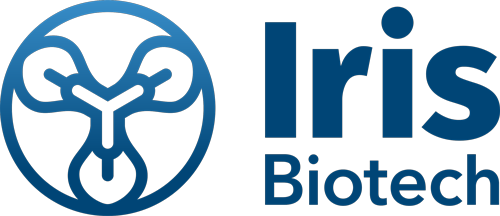Welcome to Iris Biotech
For better service please confirm your country and language we detected.
confirm selection

For better service please confirm your country and language we detected.

Thank you very much for your interest in our products. All prices listed on our website are ex-works, Germany, and may attract customs duties when imported.
You may/will be contacted by the shipping company for additional documentation that may be required by the US Customs for clearance.
We offer you the convenience of buying through a local partner, Peptide Solutions LLC who can import the shipment as well as prepay the customs duties and brokerage on your behalf and provide the convenience of a domestic sale.
Continue to Iris Biotech GmbHSend request to US distributor
Chemischer Name: N-alpha-(9-Fluorenylmethyloxycarbonyl)-4-(trifluoromethyldiazirin)-L-phenylalanine // Synonyme: Fmoc-Tdf-OH, (S)-2-(((9H-fluoren-9-yl)methoxy)carbonylamino)-3-(4-(3-(trifluoromethyl)-3H-diazirin-3-yl)phenyl)propanoic acid, Fmoc-Photo-Phe-OH
Ab 700,00 €
Novel photo-crosslinking amino acid, which can be incorporated into proteins by cultivation or by chemical synthesis into peptides and other synthetic molecules. Irradiated with UV (ca. 360 nm) for 10 min on ice yields a highly reactive carbene species that rapidly reacts with neighboring molecules to form an irreversible covalent bond.
Fmoc-Tdf can easily be introduced into any peptide sequence by conventional Fmoc/tBu methodologies. Photolysis upon UV-A irradiation (30 W/m2; 360 nm, 0 °C) yields within a few minutes into appropriate photo-cross-linkage. Hence, this building blocks enables an easy access to peptide photoprobes.
Protein-Polymer Conjugation via Ligand Affinity and Photoactivation of Glutathione S-Transferase; En-Wei Lin, Natalie Boehnke, and Heather D. Maynard; Bioconjugate Chem. 2014; 25: 1902-1909; dx.doi.org/10.1021/bc500380r.
Cell-Based Proteome Profiling of Potential Dasatinib Targets by Use of Affinity-Based Probes; Haibin Shi, Chong-Jing Zhang, Grace Y. J. Chen, and Shao Q. Yao; J. Am. Chem. Soc. 2012; 134: 3001-3014; dx.doi.org/10.1021/ja208518u.
Probing Protein-Protein Interactions with a Genetically Encoded Photocrosslinking Amino Acid; Hui-wang Ai, Weijun Shen, Amit Sagi, Peng R. Chen, and Peter G. Schultz; ChemBioChem 2011; 12: 1854-1857; DOI: 10.1002/cbic.201100194
Proteome profiling reveals potential cellular targets of staurosporine using a clickable cell-permeable probe; Haibin Shi, Xiamin Cheng, Siu Kwan Sze and Shao Q. Yao; Chem. Commun. 2011; 47: 11306-11308; DOI: 10.1039/c1cc14824a.
Direct Interaction between an Allosteric Agonist Pepducin and the Chemokine Receptor CXCR4; Jay M. Janz, Yong Ren, Richard Looby, Manija A. Kazmi, Pallavi Sachdev, Amy Grunbeck, Lynn Haggis, Daniel Chinnapen, Amy Ying Lin, Christoph Seibert, Thomas McMurry, Kenneth E. Carlson, Tom W. Muir, Stephen Hunt III, and Thomas P. Sakmar; J. Am. Chem. Soc. 2011; 133: 15878-15881; dx.doi.org/10.1021/ja206661w.
Synthesis and application of photoproline - a photoactivatable derivative of proline; Benjamin Van der Meijden and John A. Robinson; ARKIVOC 2011 (vi) 130-136.,
Photo-crosslinking of proteins in intact cells reveals a dimeric structure of cyclooxygenase-2 and an inhibitor-sensitive oligomeric structure of microsomal prostaglandin E2 synthase-1; Pierre-Olivier Hétu, Marc Ouellet, Jean-Pierre Falgueyret, Chidambaram Ramachandran, Joel Robichaud, Robert Zamboni, Denis Riendeau; Archives of Biochemistry and Biophysics 2008; 477: 155-162; DOI: 10.1016/j.abb.2008.04.038.
Covalent Capture of Phospho-Dependent Protein Oligomerization by Site-Specific Incorporation of a Diazirine Photo-Cross-Linker; Miquel Vila-Perelló, Matthew R. Pratt, Frej Tulin, and Tom W. Muir; J. Am. Chem. Soc. 2007; 129: 8068-8069; DOI: 10.1021/ja072013j.
Photo-Leucine Incorporation Reveals the Target of a Cyclodepsipeptide Inhibitor of Cotranslational Translocation; Andrew L. MacKinnon, Jennifer L. Garrison, Ramanujan S. Hegde, and Jack Taunton; J. Am. Chem. Soc. 2007; 129: 14560-14561; DOI: 10.1021/ja076250y.
Synthesis of Photoactive Analogues of a Cystine Knot Trypsin Inhibitor Protein; Thomas Durek, Junliang Zhang, Chuan He, and Stephen B.H. Kent; Org. Lett. 2007; 9(26): 5497-5500; DOI: 10.1021/ol702461z.
Photo-leucine and photo-methionine allow identification of protein-protein interactions in living cells; Monika Suchanek, Anna Radzikowska, Christoph Thiele; Nature Methods 2005; 1-7; DOI: 10.1038/NMETH752.
Direct Interaction between an Allosteric Agonist Pepducin and the Chemokine Receptor CXCR4; J. M. Janz, Y. Ren, R. Looby, M. A. Kazmi, P. Sachdev, A. Grunbeck, L. Haggis, D. Chinnapen, A. Y. Lin, C. Seibert, T. McMurry, K. E. Carlson, T. W. Muir, S. Hunt and T. P. Sakmar; Journal of the American Chemical Society 2011; 133: 15878-15881. doi:10.1021/ja206661w
Protein–Polymer Conjugation via Ligand Affinity and Photoactivation of Glutathione S-Transferase; E.-W. Lin, N. Boehnke and H. D. Maynard; Bioconjugate Chemistry 2014; 25: 1902-1909. doi:10.1021/bc500380r
Simple and Versatile Method for Tagging Phenyldiazirine Photophores; Hiroyuki Nakashima, Makoto Hashimoto, Yutaka Sadakane, Takenori Tomohiro, and Yasumaru Hatanaka; J. Am.Chem.Soc. 2006; 128(47): 15092-15093. DOI: 10.1021/ja066479y.
Application of Angiotensin-Converting Enzyme (ACE) Assay with a Fluorogenic Substrate to the Clinical Chemistry; Setsuko Ando, Kouki Matsubara, Bo Zhang, Keijiro Saku, Louis A. Watanabe, Hidehiko Watanabe, Haruhiko Aoyagi; Peptide Science 2009; 45: 341-344. CODEN:PSCIFQ. ISSN:1344-7661.
Fishing for Drug Targets: A Focus on Diazirine Photoaffinity Probe Synthesis. James R. Hill, Avril A. B. Robertson; J. Med. Chem. 2018; 61: 6945−6963. DOI: 10.1021/acs.jmedchem.7b01561.
Bitte senden Sie mir mehr Informationen über Fmoc-L-Photo-Phe-OH









